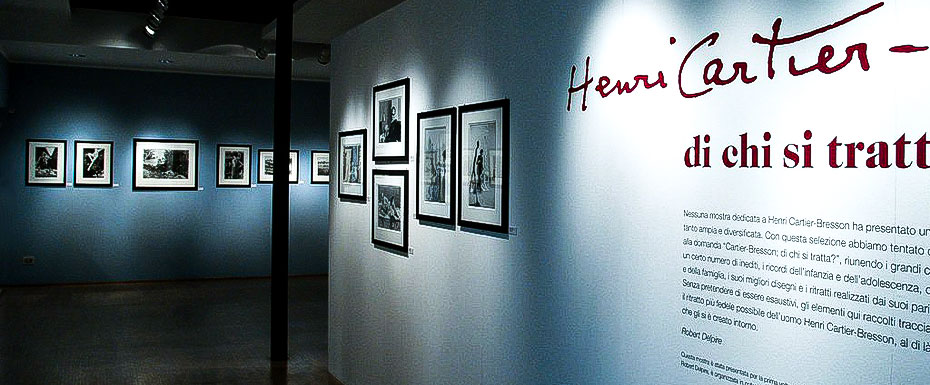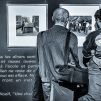
Henri Cartier-Bresson is a legendary French artist, the founder of the candid style in photography and one of the most influential street photographers.
Henri lived a long and fulfilling life. He traveled to many countries and took photos of numerous celebrities: politicians, writers, showbiz stars. However, the main role in his career has always been assigned to the lives of ordinary people.
Henri had his own vision – in his work, he considered geometry and structure to be the main criteria. He was sincerely happy when, after developing and printing the pictures, he examined them and found that all the elements of the puzzle came together for a split second, and he managed to capture this moment.
In one of his last interviews, Bresson said you cannot live for the sake of photography, because life itself will give you plenty of material for shooting. You need to do this, Henri explained, because the process itself fills you with life.
Origins
Henri Cartier-Bresson was born on August 22, 1908, in the suburbs of Paris, the city of Chantloux. Henri showed interest in painting and drawing from an early age while studying at an art school.
At the age of five, Henri met his uncle Louis, who significantly influenced the young photographer. After his death, Cartier-Bresson studied at the studio of the artist André Lot for seven years. Then, at the age of 21, in 1929, he began attending lectures on painting at the University of Cambridge.
Travels
In 1931, Henri left for Cote d’Ivoire, a country in western Africa. At that time, Bresson purchased his first camera – a bulky black box, black cape, and tripod. Such cameras, due to their technical features, allowed to shoot only static objects. Unfortunately, the first pictures of Henri came out unsuccessful, and the device itself gave up the ghost soon, unable to endure the climate of Africa.
Soon Bresson contracted malaria, which forced him to return home. The treatment lasted many months. Then, out of boredom, Henri bought his first Leica compact camera. The device made reportage shooting possible and changed Henri’s life.

Henri Cartier-Bresson. Boat, Venice, Italy, 1954
At the age of 24, Henri went to Mexico, where he lived for about a year, photographing brothels and nightlife. In 1935, Julien Levy, the head of the New York gallery, organized an exhibition of photographs which included Henri’s photographs.
Career
When Henri achieved his first success in photography, he suddenly decided to take up cinematography. While in New York, Bresson studied editing. Then, in 1936, he returned to Paris to become Jean Renoir’s second assistant, and together they shot the propaganda film La vie est à nous (Life Belongs to Us).
At the age of 25, Henri got a job as a photographer for a communist newspaper. Then, in May 1937, he traveled to Great Britain, where he filmed the coronation of George VI. Cartier-Bresson returned home with a large number of photographs that showed ordinary people, but not the monarch himself.
World War II
In 1939, the newspaper closed, and Henri, in anger, burned many of his photographs and negatives. Soon, World War II began. In May 1940, Bresson joined the French army with the rank of corporal of the Army Cinema and Photo Division. At the beginning of the conflict, France was invaded by the Nazis, and Henri became a prisoner of war. He remained captured for 36 months, having made 3 attempts to escape, the last of which was successful.
Bresson returned to Paris, where he joined the Resistance Movement. He united several journalists who were filming the occupation from the inside. Then, in 1945, a 37-year-old Bresson left for New York, where he exhibited his works at the Museum of Modern Art.
Magnum
In 1947, Henri Cartier-Bresson, together with four like-minded people, founded the Magnum photo agency. The photographers divided their working territories: Bresson got India and China. Henri urged to use only Leica cameras in their work, avoid cropping pictures and staged photography.

Cartier-Bresson went to India with his wife. The couple’s useful acquaintances allowed the photographer to get permission to shoot Mahatma Gandhi.
Bresson worked with outstanding personality on his hunger strike against discrimination against certain segments of the Indian population. Henri began filming, but less than an hour later, Gandhi was shot. The photographer captured the Prime Minister announcing the sad news, the body of Gandhi, and the crowds who had come to say goodbye. Later, the couple traveled to Pakistan, Myanmar, Malaya, China.
Henri Cartier-Bresson was just in time to photograph China before the proclamation of the People’s Republic. In Indonesia, he captured the country’s struggle for independence from the Netherlands. From his travels, Henri sent negatives to various magazines. Representatives of the agencies then sent him letters with clippings so that Bresson could see the result of his work. However, he had little interest in this and said that he liked the shooting process more than the final result.
The USSR
In 1952, Henri Cartier-Bresson published The Decisive Moment. The publication included about a hundred of the best photographs of the Frenchman. The money raised from sales was enough to keep the sinking Magnum afloat.
In 1954, Henri Cartier-Bresson was one of the first foreign photographers to visit the USSR. The pictures taken during the trip were included in the People of Moscow book. Naturally, there was a lot of excitement around the reportage, but Bresson was indifferent to this.
At the same time, under different circumstances, two of the Magnum founders died. After losing his friends, Henri tried to support the original idea of Magnum so that the agency did not become a completely commercial project.
In the early 70s, Bresson publishes another book, Vive la France (Long Live France), and shoots two films for CBS News. Bresson’s first marriage fell apart. A little later, he married Martine Frank, his Magnum colleague. Due to his age, Henri gradually left photography and turned to paint. He took out his camera only to photograph his daughter, wife, and cats. Bresson died in 2004 at the age of 95 in the city of Ile sur la Sorgue.
He was buried in a private cemetery. During his lifetime, Henri joked that he had no imagination, so he never became an artist and quit directing. Taking pictures, he said, was always easier for him. Nevertheless, the Frenchman’s impact on street and news photography was immense, and his legacy has already inspired several generations of camera artists.





